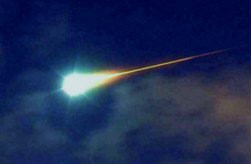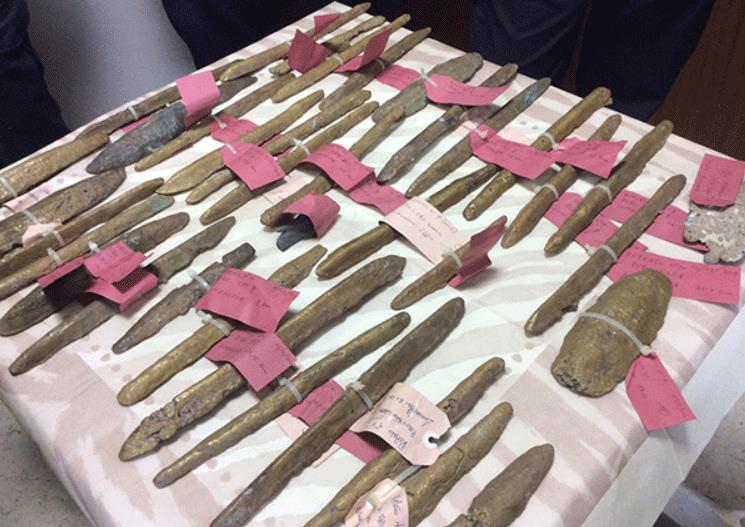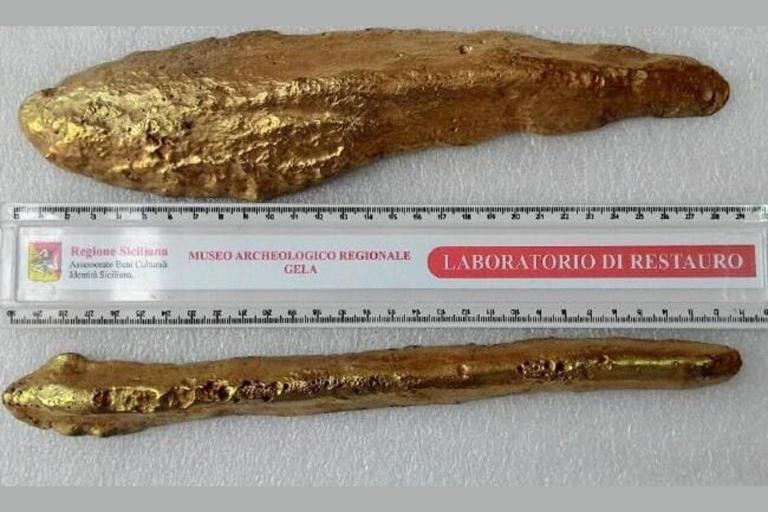




Looking After Your Finds - Reference

Identifying Minerals
Powered By Sispro1

[1-2]
Scientists discover metal from the 'lost city of Atlantis'
Pages 1-2
Metallurgy Menu
Copyright All Rights Reserved by Nigel G Wilcox E-Mail: ngwilcox100@gmail.com
Group Pages
Minerals
Complimentary Topics
Designed by Nigel G Wilcox
The Paragon Of Metal Detecting
& Archaeology
& Archaeology
Who Own's the World's Gold?
Pages
Member NCMD
Reference Menu
Story by Harriet Brewis 19.05.24 21:00 - Indy100
It’s tempting to imagine that the world was once home to mythical lands of beauty and abundance whose streets were lined with gold.
Well, if Plato is to be believed, it’s not gold they were lined with but orichalcum. At least, in the case of Atlantis.
According to the iconic Greek philosopher, the fire-coloured metal was second in value only to gold, and the legendary lost continent was a hotbed of the stuff.
He frequently mentions orichalcum in his Critias dialogue in which he tells the story of Atlantis, World History Encyclopedia reports.
In his account, Plato claimed that the metal was mined in many parts of the continent and that its buildings – including a Temple of Poseidon and royal palace – were coated in it, making them shine with a red light.
“In the interior of the temple, the roof was of ivory, curiously wrought everywhere with gold and silver and orichalcum; and all the other parts, the walls and pillars and floor, they [were] coated with orichalcum,” he wrote in his Critias dialogue.
The philosopher also allegedly claimed that the laws of Atlantis were dictated by Poseidon – the Greek god of the sea – which were then inscribed by the first kings of Atlantis on a pillar of orichalcum.
It is perhaps unsurprising, therefore, that orichalcum has been at the heart of the centuries-old search for the drowned continent.
After all, believers argue, if it was so chock-full of the stuff, finding the metal could lead to finding the submerged land itself.
And, in late 2014, it looked as though their theory could be proven right.
Well, if Plato is to be believed, it’s not gold they were lined with but orichalcum. At least, in the case of Atlantis.
According to the iconic Greek philosopher, the fire-coloured metal was second in value only to gold, and the legendary lost continent was a hotbed of the stuff.
He frequently mentions orichalcum in his Critias dialogue in which he tells the story of Atlantis, World History Encyclopedia reports.
In his account, Plato claimed that the metal was mined in many parts of the continent and that its buildings – including a Temple of Poseidon and royal palace – were coated in it, making them shine with a red light.
“In the interior of the temple, the roof was of ivory, curiously wrought everywhere with gold and silver and orichalcum; and all the other parts, the walls and pillars and floor, they [were] coated with orichalcum,” he wrote in his Critias dialogue.
The philosopher also allegedly claimed that the laws of Atlantis were dictated by Poseidon – the Greek god of the sea – which were then inscribed by the first kings of Atlantis on a pillar of orichalcum.
It is perhaps unsurprising, therefore, that orichalcum has been at the heart of the centuries-old search for the drowned continent.
After all, believers argue, if it was so chock-full of the stuff, finding the metal could lead to finding the submerged land itself.
And, in late 2014, it looked as though their theory could be proven right.

Dozens of orichalcum ingots were found in a shipwreck off the coast of Sicily ((TANN))
© Provided by Indy 100
© Provided by Indy 100
In December of that year, a diver named Francesco Cassarino discovered 40 ingots of a mysterious metal nestled within a 2,600-year-old shipwreck off the coast of Sicily.
Awe-struck by the discovery, research teams combed the area for more clues and, in February 2016, they discovered 47 new ingots in the same area, tens of metres from the first.
Testing revealed that the ingots, which appeared to be handcrafted into cigar or flat bar-like shapes, were made of an alloy which mainly consisted of copper and zinc, according to a 2021 study, published in the Journal of Archaeological Science.
This alloy, which was a yellowish-gold colour, but with the red tinge mentioned by Plato, was thenceforth known as orichalcum.
Awe-struck by the discovery, research teams combed the area for more clues and, in February 2016, they discovered 47 new ingots in the same area, tens of metres from the first.
Testing revealed that the ingots, which appeared to be handcrafted into cigar or flat bar-like shapes, were made of an alloy which mainly consisted of copper and zinc, according to a 2021 study, published in the Journal of Archaeological Science.
This alloy, which was a yellowish-gold colour, but with the red tinge mentioned by Plato, was thenceforth known as orichalcum.

The cleaned ingots show how closely orichalcum ressembled gold ((Sebastiano Tusa, Superintendent of the Sea-Sicily Region)) © Provided by Indy 100
And, indeed, modern studies suggest that this metal so coveted by the ancients comprised around 80 per cent copper and 20 per cent zinc, with small amounts of lead and other metals mixed in.
Its value was based on its malleability, resistance to tarnishing, durability (it was stronger than copper) and resemblance to gold.
Of course, there were those who would take advantage of this last quality, with a number of prominent Romans craftily swapping one for the other.
Its value was based on its malleability, resistance to tarnishing, durability (it was stronger than copper) and resemblance to gold.
Of course, there were those who would take advantage of this last quality, with a number of prominent Romans craftily swapping one for the other.
More>>>




















